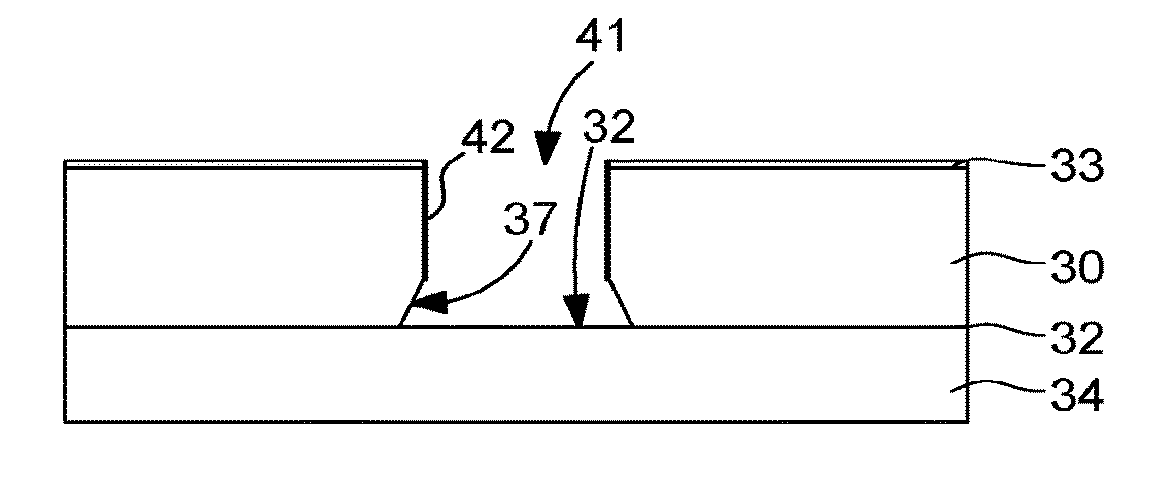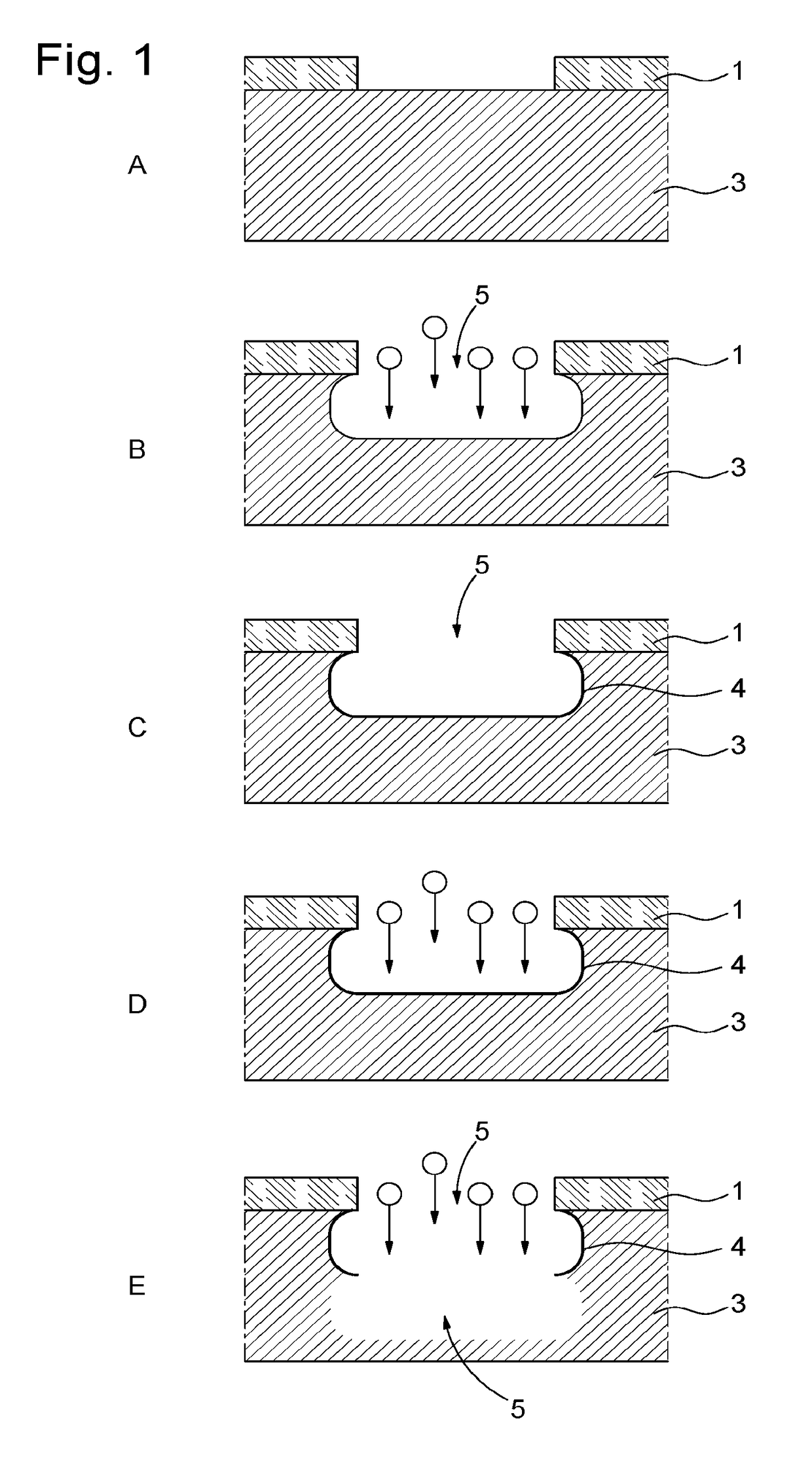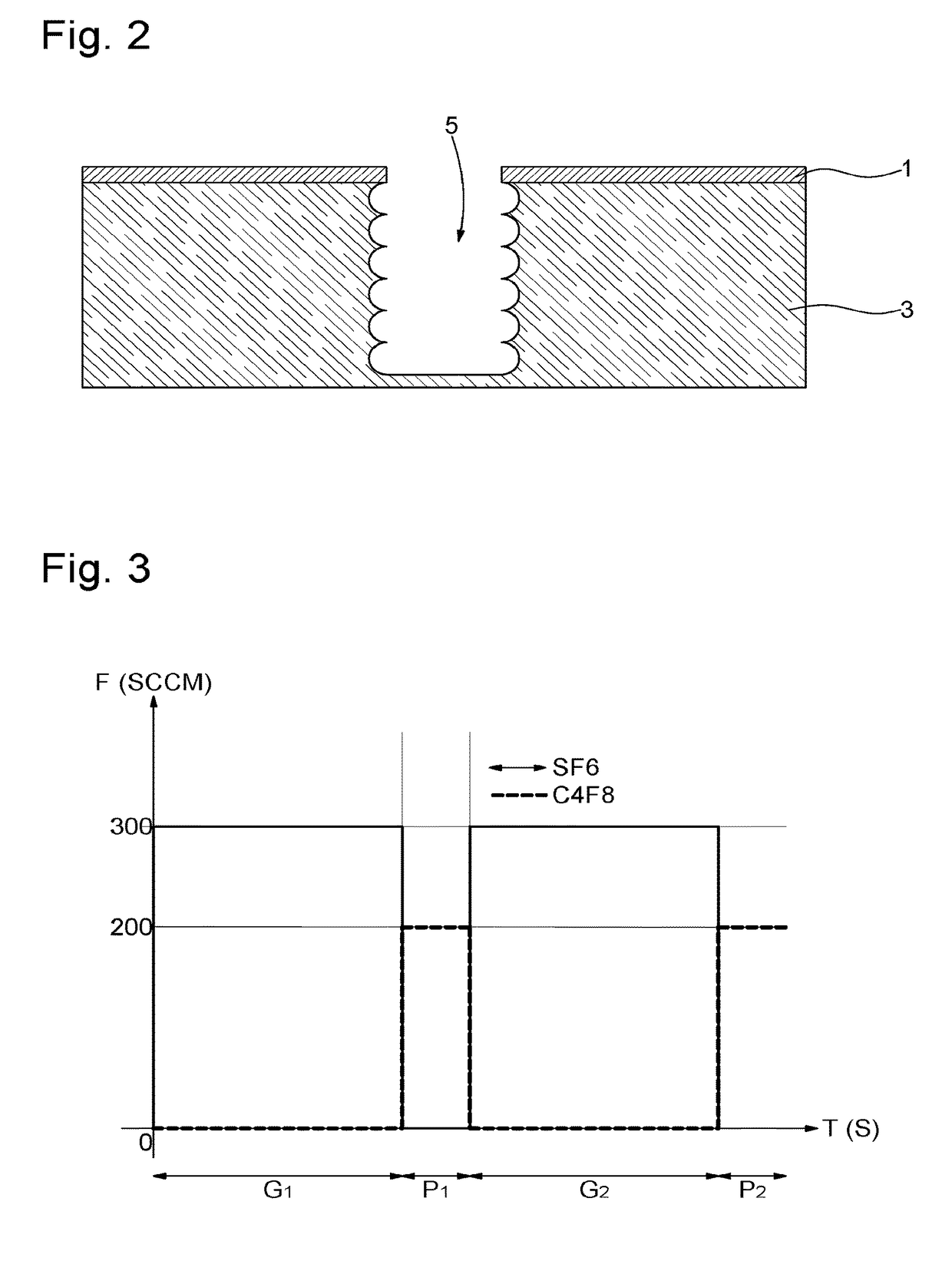Micromechanical component with a reduced contact surface and its fabrication method
a micromechanical and contact surface technology, applied in the field of micromechanical components with a reduced contact surface, can solve the problems of unsatisfactory vertical etches b>5/b>, and achieve the effect of improving the tribology of components
- Summary
- Abstract
- Description
- Claims
- Application Information
AI Technical Summary
Benefits of technology
Problems solved by technology
Method used
Image
Examples
Embodiment Construction
[0032]The invention relates to a method 11 for fabricating a silicon-based micromechanical component. As illustrated in FIG. 12, method 11 includes a first step 13 of taking a silicon-based substrate.
[0033]The term “silicon-based” means a material including single crystal silicon, doped single crystal silicon, polycrystalline silicon, doped polycrystalline silicon, porous silicon, silicon oxide, quartz, silica, silicon nitride or silicon carbide. Of course, when the silicon-based material is in crystalline phase, any crystalline orientation may be used.
[0034]Typically, as illustrated in FIG. 4, the silicon-based substrate 31 may be a silicon-on-insulator substrate (also known by the abbreviation “SOI”) comprising an upper silicon layer 30 and a lower silicon layer 34 joined by an intermediate silicon oxide layer 32. However, alternatively, the substrate could comprise a silicon layer added to another type of base such as, for example, a metal base.
[0035]The method continues with ste...
PUM
| Property | Measurement | Unit |
|---|---|---|
| opening angle | aaaaa | aaaaa |
| open angle | aaaaa | aaaaa |
| open angle | aaaaa | aaaaa |
Abstract
Description
Claims
Application Information
 Login to View More
Login to View More - R&D
- Intellectual Property
- Life Sciences
- Materials
- Tech Scout
- Unparalleled Data Quality
- Higher Quality Content
- 60% Fewer Hallucinations
Browse by: Latest US Patents, China's latest patents, Technical Efficacy Thesaurus, Application Domain, Technology Topic, Popular Technical Reports.
© 2025 PatSnap. All rights reserved.Legal|Privacy policy|Modern Slavery Act Transparency Statement|Sitemap|About US| Contact US: help@patsnap.com



